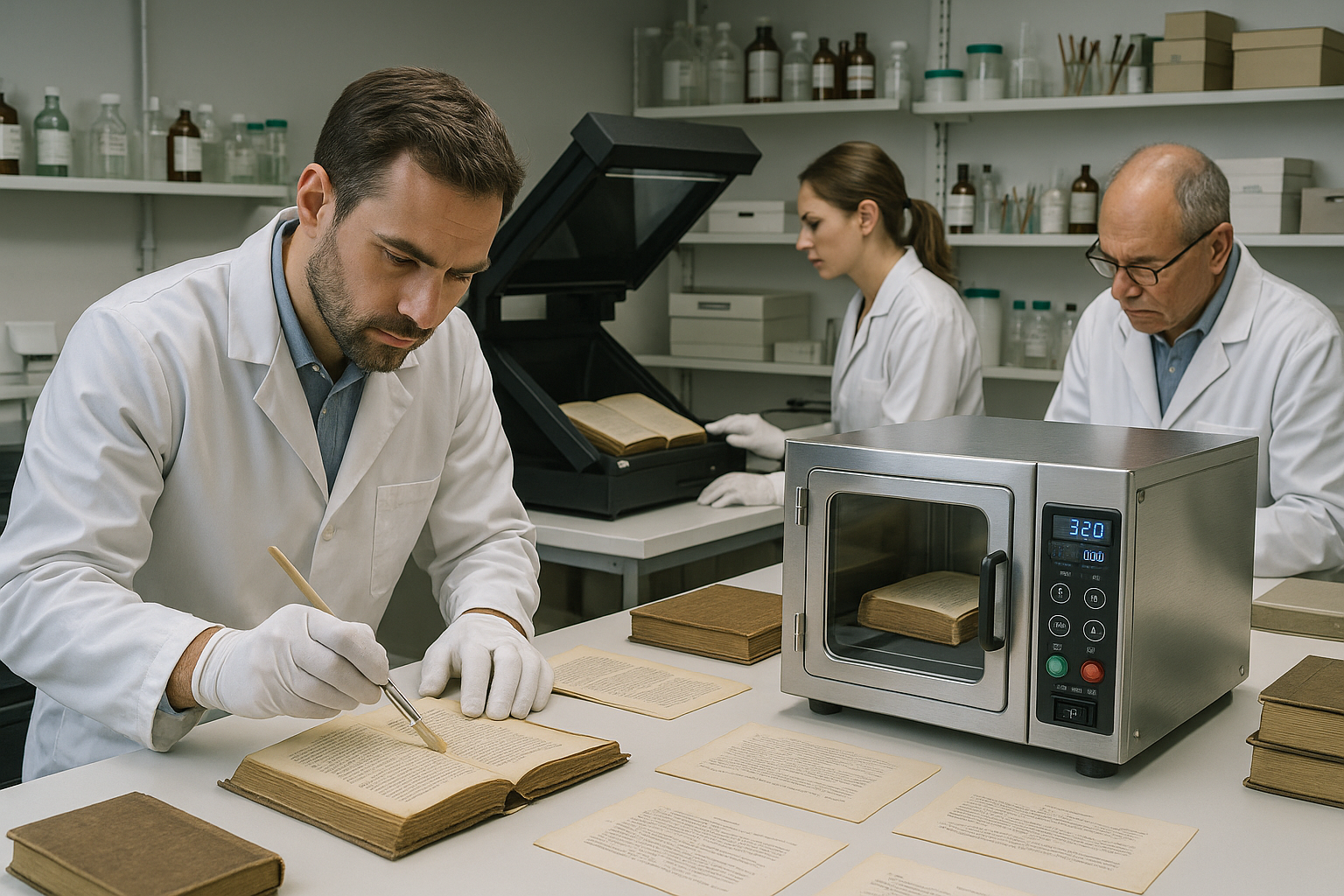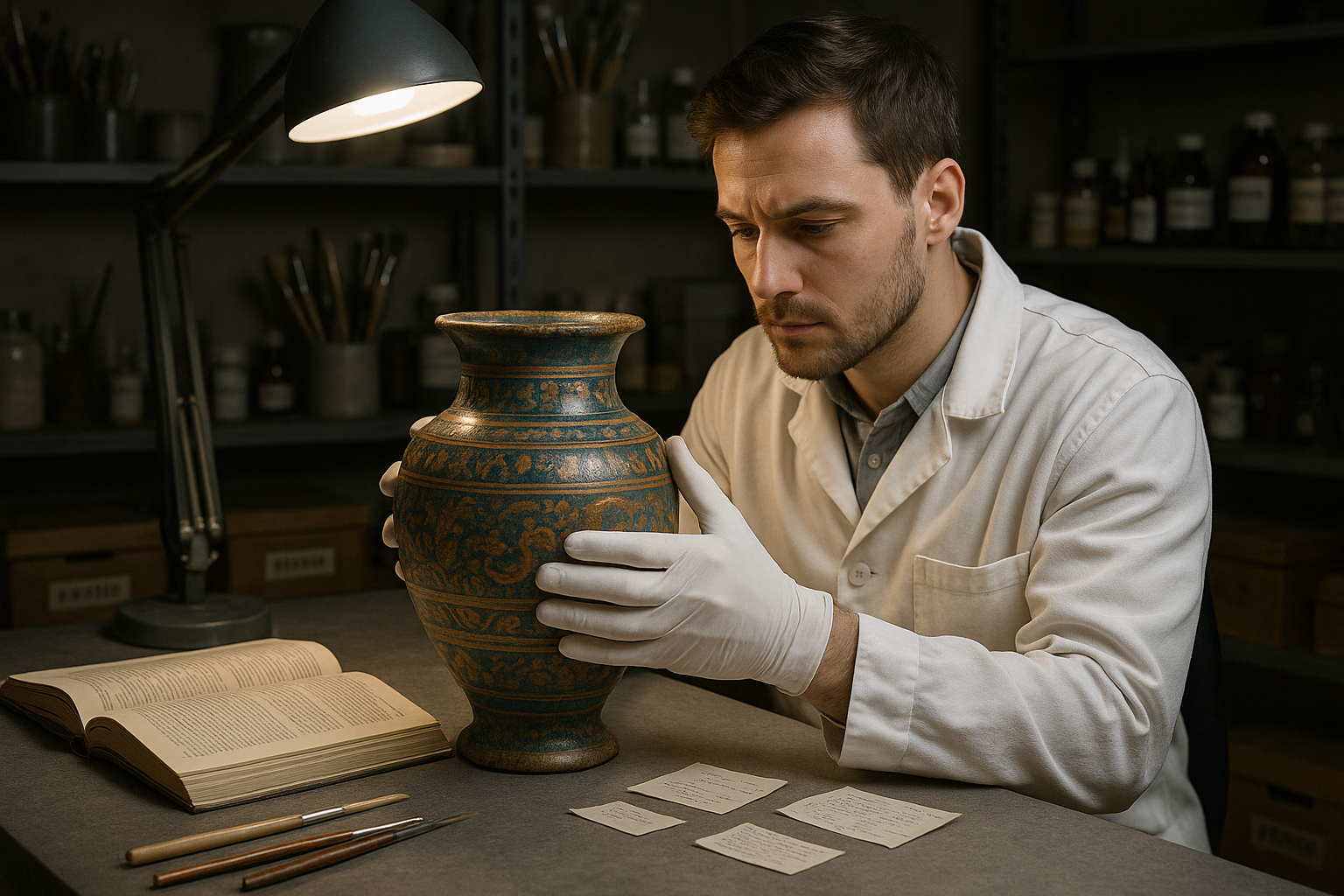In the quiet corners of libraries, where the scent of aged paper fills the air, the whispers of history come alive through the pages of books and documents. These literary treasures, however, face an invisible enemy that silently threatens their longevity: acidification. As paper ages, it naturally becomes acidic, leading to deterioration, brittleness, and eventual disintegration. For bibliophiles, archivists, and historians, the battle to preserve these cultural artifacts is both a passion and a responsibility. 📚
In recent years, deacidification techniques have emerged as a powerful ally in this preservation effort. These methods, once shrouded in complexity and accessible only to a select few, are now evolving, becoming more sophisticated, and, importantly, more accessible. This article delves into the latest advancements in deacidification, offering a comprehensive guide for anyone vested in the preservation of books and documents.
Why should we care about deacidification? The answer lies in the essence of what books and documents represent. They are not just physical objects but vessels of knowledge, culture, and history. Each page tells a story, not just through its words, but through the hands that have turned it and the eyes that have read it. Preserving them means preserving our collective human experience.
The Science Behind Deacidification
At its core, deacidification is a chemical process aimed at neutralizing the acids present in paper. But how does paper become acidic in the first place? This happens during the manufacturing process when lignin, a natural component of wood, breaks down, releasing acidic compounds. Over time, environmental factors such as humidity and pollution can exacerbate this natural acidification.
Understanding the science behind deacidification is crucial for selecting the appropriate preservation technique. Modern methods have moved beyond basic buffering, incorporating advanced chemical treatments that not only neutralize existing acids but also create a protective alkaline reserve, safeguarding against future acidification. This dual approach marks a significant evolution in the field.
Exploring Cutting-Edge Techniques
As we navigate through the landscape of deacidification, several cutting-edge techniques stand out. One such method involves the use of nanoparticles, which offer precision and efficacy in treating paper without causing damage. Another innovative approach is the application of gaseous deacidification, providing a non-invasive option that can treat large volumes of material simultaneously.
Additionally, the field is witnessing a growing interest in environmentally friendly deacidification processes. These methods prioritize sustainability by utilizing non-toxic chemicals and reducing waste, aligning with broader global efforts to minimize ecological impact. 🌍
Challenges and Considerations
Despite the advancements, deacidification is not without its challenges. The choice of technique can vary based on the type and condition of the material, requiring careful assessment by professionals. Cost, scalability, and the potential impact on inks and other materials also play critical roles in decision-making.
Moreover, while deacidification can extend the lifespan of paper, it is not a panacea. The physical condition of the material, previous conservation efforts, and ongoing storage conditions must all be considered to ensure holistic preservation.
The Role of Technology and Innovation
Technology continues to be a driving force in the evolution of deacidification techniques. Innovations in digital tools and materials science have opened new avenues for research and application. From advanced imaging techniques that assess paper condition to the development of smart materials that respond to environmental changes, the integration of technology is reshaping the future of preservation.
As these innovations progress, they promise to make deacidification more accessible and effective, democratizing preservation efforts and empowering institutions of all sizes to protect their collections.
In conclusion, the world of deacidification is at a pivotal moment, characterized by rapid advancements and increasing accessibility. For those dedicated to preserving the written word, understanding and embracing these new techniques is essential. As you explore the depths of this article, you’ll gain valuable insights into the latest methods, their applications, and the future of book and document preservation. Join us on this journey to safeguard our literary heritage for generations to come. 🕰️

Conclusion: Revitalize Your Collection with Modern Deacidification Techniques 📚
In conclusion, the journey through the latest deacidification techniques for preserving books and documents has illuminated several key points that are crucial for anyone interested in safeguarding their collections. From understanding the fundamental causes of acidification to exploring innovative solutions and the importance of preserving cultural heritage, this article has aimed to equip you with valuable insights and actionable steps.
Recap of Key Points
Firstly, we delved into the causes of acidification, primarily focusing on the role of acidic paper manufacturing processes that have left many books and documents vulnerable to deterioration. Recognizing these underlying issues is the first step toward effective preservation.
Secondly, the article highlighted various deacidification methods, both traditional and modern. Traditional methods, while still in use, often lack the efficiency and environmental considerations that modern techniques provide. The advent of new technologies, such as mass deacidification and non-aqueous processes, represents a significant advancement in the field, offering more effective and sustainable options.
Furthermore, we discussed the role of deacidification not just as a preservation tool but as a means of cultural conservation. By ensuring that historical documents and literary works are preserved for future generations, we contribute to a broader understanding of our past and the richness of our cultural heritage.
The Importance of Preservation
Preserving books and documents is not merely about maintaining physical items; it’s about protecting the narratives and knowledge contained within them. These artifacts provide a window into our history, our achievements, and our mistakes. They are the silent storytellers of our civilization, and it is our responsibility to ensure their longevity. As we have seen, modern deacidification techniques offer promising ways to extend the life of these precious items without compromising their integrity.
Call to Action
As we conclude, I encourage you to reflect on the importance of preserving our cultural heritage and the role you can play in this mission. Whether you’re an archivist, a librarian, a collector, or simply someone who cherishes books, there’s always something you can do. Share this knowledge with your community, consider supporting local preservation efforts, or even start a conversation about the importance of document preservation.
Feel free to comment below with your thoughts or experiences related to document preservation. If you found this article insightful, share it with your network to spread awareness about the importance of deacidification. Together, we can make a difference in preserving the stories and knowledge that shape our world. 🌍
For further reading and to stay updated on the latest in book and document preservation, consider exploring resources from reputable institutions such as the [Library of Congress](https://www.loc.gov/preservation/) and the [Northeast Document Conservation Center](https://www.nedcc.org/).
—
By ensuring that your conclusion is engaging, informative, and inspiring, you’ll not only reinforce the importance of the topic but also encourage readers to take meaningful action. If you have any specific sections of the article you’d like me to expand on, please let me know!
Toni Santos is a restoration artist and historical design specialist devoted to reviving the beauty and soul of the past. Through meticulous craftsmanship and a deep respect for heritage, Toni brings antiques back to life—preserving not just objects, but the stories they carry through time. With hands trained in traditional restoration techniques and an eye for age-worn elegance, Toni restores furniture, artworks, artifacts, and heirlooms with precision and reverence. His work reflects a belief that restoration is not correction—it’s conversation between the old and the present. Blending artistry, conservation ethics, and historical research, Toni approaches every piece as a narrative in wood, metal, leather, or fabric—each with scars that speak of eras gone by. Whether repairing a hand-carved chair or reviving a forgotten painting’s vibrance, he respects the integrity of original craftsmanship while honoring its continued life. As the creative force behind Vizovex, Toni shares before-and-after showcases, restoration walkthroughs, and visual essays exploring the techniques and philosophies behind authentic antique revival. His platform celebrates: The timeless value of handcrafted work The quiet artistry of repair and preservation The cultural memory embedded in material objects The delicate balance between age and renewal For collectors, curators, artisans, and lovers of legacy, Toni’s world is an invitation to see restoration not as fixing what’s broken—but as restoring what still lives beneath the dust of time.




